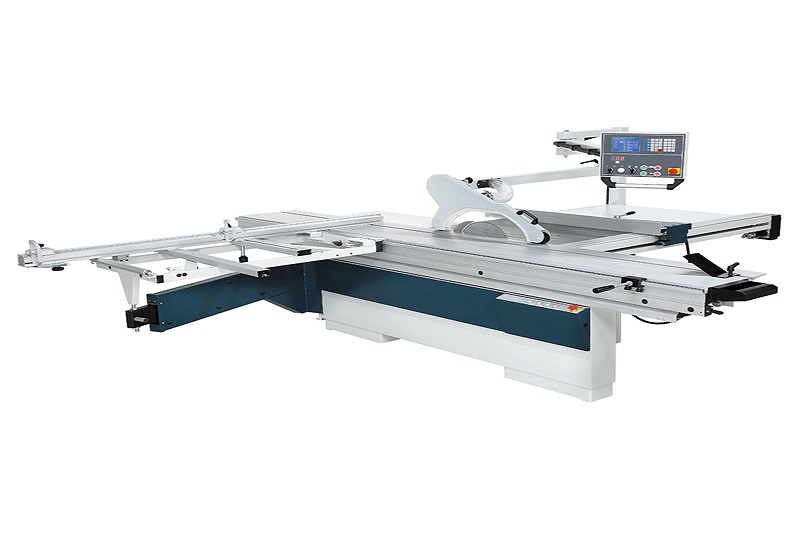
If you ever found yourself standing in an aisle full of sliding panel saw, looking around and thinking, “Which one should I choose?” or “What peculiarities should I consider before making a purchase?” then my friend, you’re in the right place. There’s a certain satisfaction in designing and handcrafting your own creations with the use of sliding panel saw. But as enchanting as sliding panel saw are, they can be equally daunting due to their multitude of features and considerable price tags.
These saws have become an essential piece in the toolkit of every woodworker, contractor, and DIY-formidable public. Irrespective of whether you are a seasoned professional or a greenhorn at woodworking, understanding the functionality, advantages, and potential drawbacks in these devices is necessary. As you read through, prepare to delve deeper and understand the mechanics of these saw beasts. And, I promise to make you an aficionado by functionally breaking down the points to consider when purchasing sliding panel saw for sale.
A Brush with Contemporary Sawing
Saws have been instrumental throughout human history, evolving from stone blades to today’s sophisticated machinery like sliding panel saw designed for precision, convenience, and safety. Sliding panel saw, primarily used for panel processing, are equipped for cutting large panels in both vertical and horizontal positions. What makes these saws stand apart is their design which enables easy handling of heavy works, delivering clean and accurate cuts with negligible physical exertion.
Durability, performance, and safety are some aspects contributing to their popularity among woodworking enthusiasts. Since purchasing such an instrument is an investment, it’s necessary to navigate the market for the best available choice. Not simply on cost terms, but also in terms of features, function, and longevity. Determining what you need in your sliding panel saw is the first step in making an informed decision and a better purchase.
What to Consider When Buying a Sliding Panel Saw?
While shopping for your sliding panel saw for sale, a few key factors need due consideration. Power and cutting speed, easy operation and maintenance, safety features, the quality of cuts, and obviously, your budget are few to name. These factors may vary, based on whether the use is commercial or home-based, and the nature of project: simple DIY projects or professional grade designs.
Furthermore, look for features like rip fences, miter gauges, and dust collection methods which can significantly improve your experience and productivity. An understanding of blade types and saw styles are equally critical in making the right purchase; each type of blade is designed for a specific kind of cut.

Sliding Panel Saw
The Centrality of Power & Cutting Speed
Power and cutting speed are directly proportional to the efficiency of any power tool. Similarly, these factors in a sliding panel saw decide the ease-of-operation as well as the quality of the outcome. Heavier workloads require more power, so a relatively powerful motor is paramount for commercial use. A motor power of 2-5 HP should suffice for most woodworking operations.
Cutting speed, meanwhile, depends on the rotational speed of the blade and the teeth count. More teeth result in smoother cuts, while a higher spinning speed enables faster work — but always remember the safety variables they pose.
The Importance of Safety Features
A sliding panel saw is a powerful tool, and like all power tools, safety is a prime concern. Features like blade guard, riving knife, anti-kickback pawls and easily reachable controls ensure you can focus on the design without compromising safety. Models that are easier to control and stable always top the safety charts.
The Allure of Precise and Clean cuts
You definitely don’t want your hard work ruined by ragged or skewed cuts, do you? Hence, the capacity to deliver precise, clean cuts is vital. Keep an eye out for sliding panel saw with a sturdy, flat table and sharp blades that can easily handle the woodworking cubes without causing damaging vibrations.
Space and Pricing Considerations
Given their heavy-duty construction, sliding panel saw require significant space. A spacious work area helps achieve the full potential of the tool. Concerning pricing, quality, and functionality often increase with cost. Justifying investment based on the scale and frequency of your projects can help set a reasonable budget.
Conclusion: Making the Cut
Understanding the ins and outs of sliding panel saw is vital in helping you make the best purchase decision possible. It’s crucial to comprehend the pros and cons, the unique features you want, safety measures and pricing. Every tool is an investment and sliding panel saw are no exception. While purchasing, consider your unique needs, budget, and convenience. Never compromise on safety, and remember that saving a few pennies should never stand in the way of getting the best tool for your job. Whether you are a professional woodworker, a design enthusiast, or a DIY sorcerer, ensuring you have the right sliding panel saw can make tasks more enjoyable, efficient, and rewarding. So, be savvy, understand your needs and make the cut!





